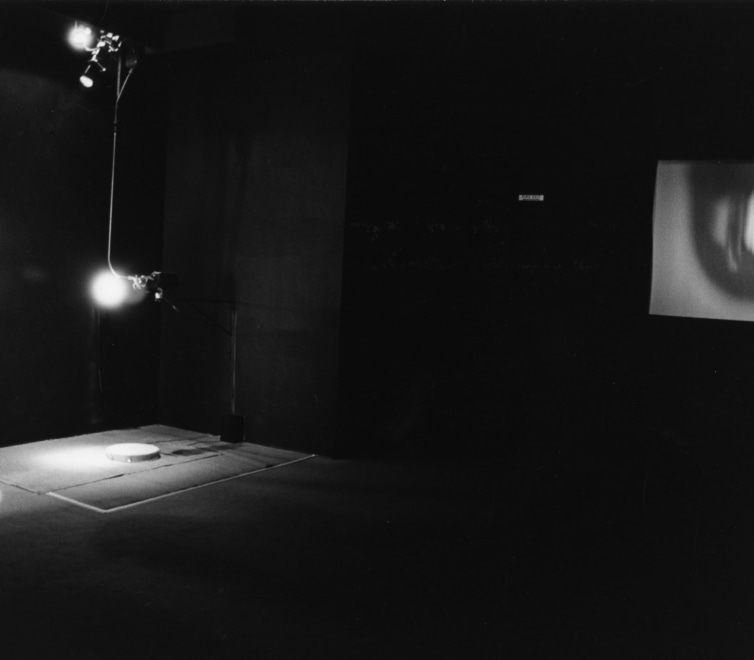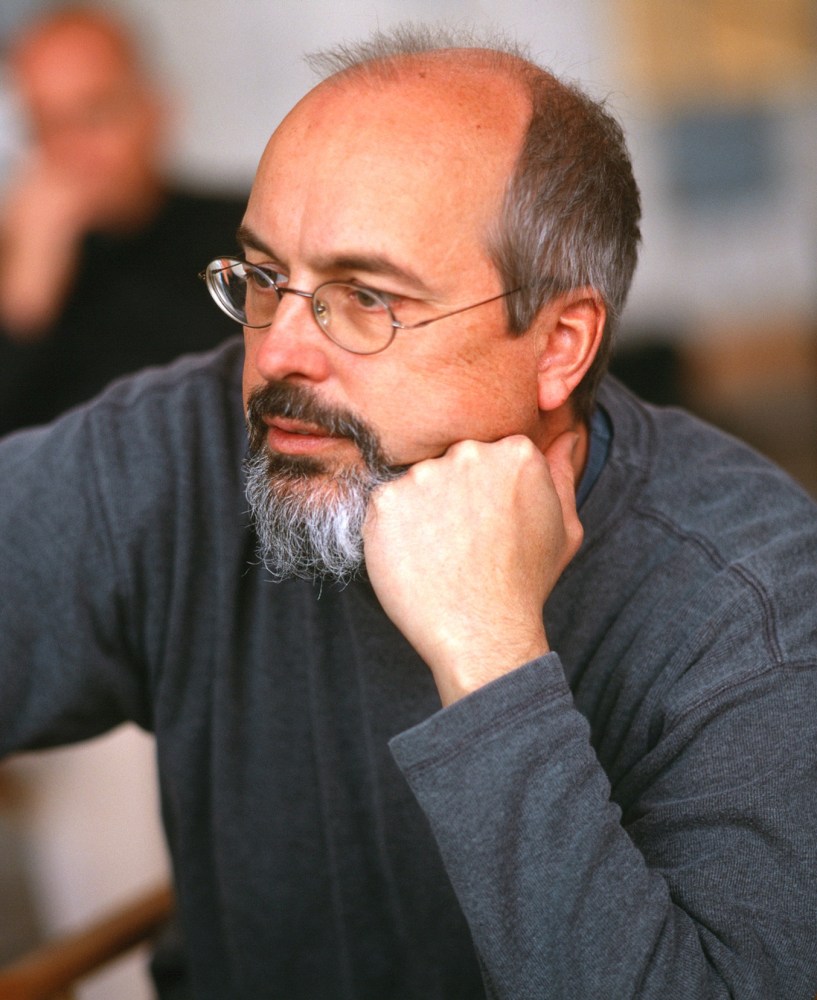

Photo: Darin Moran
Bill Viola (b.1951) is widely recognized as one of the leading video artists on the international scene. For over 40 years he has created videotapes, architectural video installations, sound environments, electronic music performances, and works for television broadcast. Viola’s video installations—total environments that envelop the viewer in image and sound—employ state-of-the-art technologies and are distinguished by their precision and direct simplicity. His single channel videotapes have been broadcast and presented cinematically around the world, while his writings have been published and anthologized for international readers.
Since the early 1970s, Viola has used video to explore the phenomena of sense perception as an avenue to self-knowledge. His works focus on universal human experiences—birth, death, the unfolding of consciousness—and have roots in both Eastern and Western art as well as spiritual traditions, including Zen Buddhism, Islamic Sufism, and Christian mysticism. He has been instrumental in the establishment of video as a vital form of contemporary art, and in so doing has helped to expand its scope in terms of technology, content, and historical reach.
Viola received his BFA in Experimental Studios from Syracuse University in 1973. Since then he has created over 150 works that have been shown in museums, galleries, film festivals, and on public television worldwide. During the 1970s he lived for 18 months in Florence, Italy, as technical director of production in one of the first video art studios in Europe, and then travelled widely to study and record traditional performing arts in the Solomon Islands, Java, Bali, and Japan. In 1977 Viola was invited to show his videotapes at La Trobe Univerisity (Melbourne, Australia) by cultural arts director Kira Perov who, a year later, left Australia to join him in New York. They began a lifelong collaboration, working and travelling together. After they married in 1980 they lived in Japan for a year and a half on a Japan/U.S. Cultural Exchange Fellowship, where they studied Buddhism with Zen Master Daien Tanaka and had an artist-in-residency at Sony Corporation’s Atsugi research laboratories. In 1984 another artist-in-residency at the San Diego Zoo in California produced footage for a project on animal consciousness.
Viola represented the U.S. at the 46th Venice Biennale in 1995, premiering an ensemble of five new installation works titled Buried Secrets. In 1997 the Whitney Museum of American Art organized Bill Viola: A 25-Year Survey, an exhibition that travelled for two years to six museums in the United States and Europe. He was invited to be a Scholar-in-Residence at the Getty Research Institute in Los Angeles in 1998, and later that year created a suite of three new video pieces for the rock group Nine Inch Nails’ world tour. His 1994 videofilm Déserts, created to accompany the music composition of the same name by Edgard Varèse, received its American premiere at the Hollywood Bowl in August 1999 with the Los Angeles Philharmonic, conducted by Esa-Pekka Salonen. In 2002, Viola completed his most ambitious project, Going Forth By Day, a five part projected digital “fresco” cycle in high definition video, which was on view in Bill Viola: Visions at the ARoS Aarhus Kunstmuseum in Denmark in 2005. Following the completion of a four-month exhibition at the J. Paul Getty Museum in Los Angeles in early 2003, Bill Viola: The Passions travelled to the National Gallery London later that fall, to the Fondación “La Caixa” in Madrid in early 2005, and subsequently to the National Gallery of Australia in Canberra. In 2004 Viola began collaborating with director Peter Sellars and conductor Esa-Pekka Salonen to create a new production of Richard Wagner’s opera, Tristan and Isolde, which was presented in project form by the Los Angeles Philharmonic in December 2004. The production of the complete opera received its world première at the L’Opéra National de Paris, Bastille in April 2005 (with a reprise in November) and was presented once more at the Disney Concert Hall in Los Angeles in March 2007, and in New York in April 2007, produced by the Lincoln Center for the Performing Arts.
One of the largest exhibitions of Viola’s installations to date, Bill Viola: Hatsu-Yume (First Dream) (2006-2007), drew over 340,000 visitors to the Mori Art Museum in Tokyo. In 2007 nine installations were shown at the Zahenta National Gallery of Art, Warsaw; and Ocean Without a Shore was created for the 15th century Church of San Gallo during the Venice Biennale. In 2008 Bill Viola: Visioni interiori, a survey exhibition organized by Kira Perov, was presented in Rome at the Palazzo delle Esposizioni. In 2014, twenty works were shown at the Grand Palais, Paris, and a few months later, part one of the St. Paul’s commission was installed in the London cathedral, Martyrs (Earth, Air, Fire, Water). In 2015, Viola had solo exhibitions at Yorkshire Sculpture Park and the National Galleries of Scotland. The following year, Bill Viola and the Moving Portrait went on view at the National Portrait Gallery in Washington, D.C. In 2017 alone he was the subject of several major museum retrospectives including Palazzo Strozzi, Florence; The Diechtorhallen, Hamburg; Redtory Museum of Contemporary Art, Guangzhou, China; and the Guggenheim Museum Bilbao. Major retrospectives in 2019 include the acclaimed I Do Not Know What It Is I Am Like: The Art of Bill Viola at the Barnes Foundation in Philadelphia, Bill Viola: Mirrors of the Unseen at La Pedrada - Casa Milà in Barcelona, and Bill Viola / Michelangelo at the Royal Academy of Art in London, which paired video works by Viola with drawings by the Renaissance master from the Royal Collection.
Viola is the recipient of numerous awards and honors, including a John T. and Catherine D. MacArthur Foundation Fellowship in 1989, and the first Medienkunstpreis in 1993, presented jointly by Zentrum für Kunst und Medientechnologie, Karlsruhe, and Siemens Kulturprogramm, in Germany. He holds honorary doctorates from Syracuse University (1995), The School of the Art Institute of Chicago (1997), California Institute of the Arts (2000), and the Royal College of Art, London (2004) among others, and was inducted into the American Academy of Arts and Sciences in 2000. Viola was made a National Academician of the New York-based National Academy in June 2012 and elected an Honorary Royal Academician in 2017. Bill Viola and Kira Perov live and work in Long Beach, California. They have two children.
Bill Viola (b.1951) is widely recognized as one of the leading video artists on the international scene. For over 40 years he has created videotapes, architectural video installations, sound environments, electronic music performances, and works for television broadcast. Viola’s video installations—total environments that envelop the viewer in image and sound—employ state-of-the-art technologies and are distinguished by their precision and direct simplicity. His single channel videotapes have been broadcast and presented cinematically around the world, while his writings have been published and anthologized for international readers.

